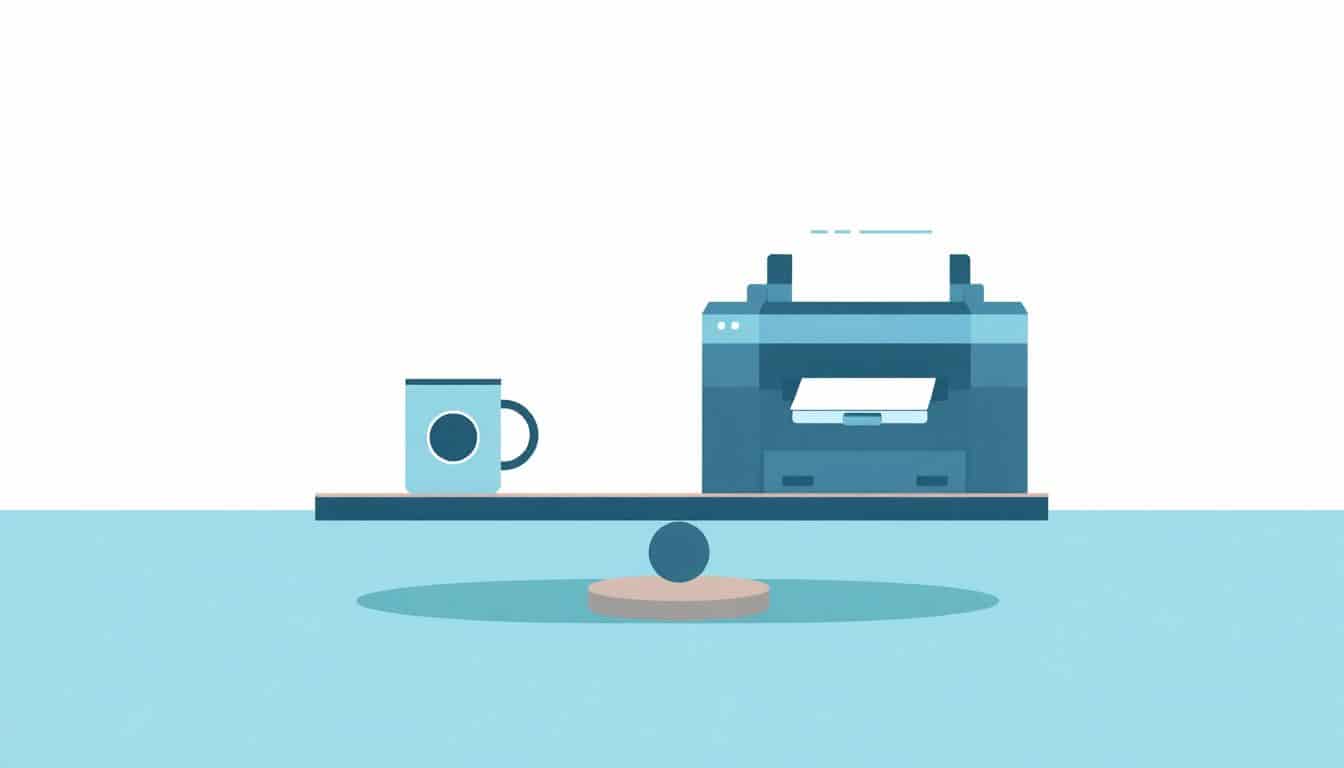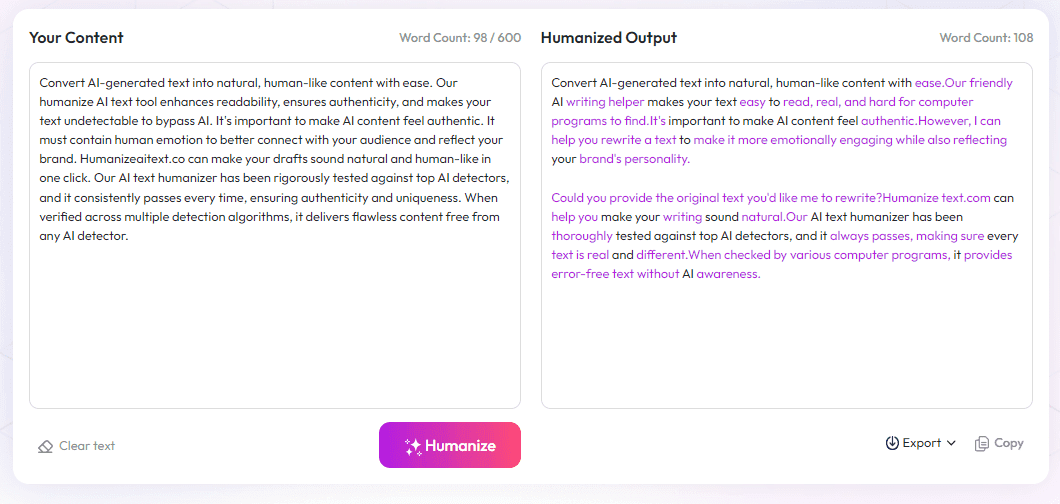Table of Contents
Hey there! If you've ever wondered which print method is better for your business in 2025, you're not alone. Choosing between POD and offset printing can feel overwhelming with so many factors in play. The good news? By keeping an eye on cost, quality, speed, and eco-friendliness, you can make smarter choices that help your projects shine.
Stick with me, and I’ll show you how POD and offset printing stack up in everyday terms, so you can pick what’s right for your needs and wallet. Plus, you'll get a sneak peek at when to use each method to turn a profit and stay ahead of deadlines.
Ready to figure out which printing style suits your projects best? Let’s get into the details so you can print smarter in 2025.
Key Takeaways
Key Takeaways
- For small runs, quick turnarounds, or testing ideas, POD is better due to lower costs and flexibility. For large quantities (2,500+), offset is more cost-effective with higher print quality.
- POD costs roughly $8–$25 per copy and offers fast delivery, while offset has high setup costs but lowers per-unit prices for big orders. Choose based on project size and budget.
- Offset printing delivers superior color accuracy and sharp images, ideal for art or photo-heavy projects. POD’s quality is good for basic needs and faster deadlines.
- Both methods offer different customization options: POD is good for small projects with eco-friendly choices, whereas offset handles premium materials and finishes for high-end projects.
- In 2025, POD is more eco-friendly due to less waste and sustainable options. Offset is adopting greener practices but traditionally used more resources.
- Use POD for testing, limited editions, or small demand projects. Shift to offset for large orders to cut costs and grow your profit margins.
- POD is faster (2–5 days), making it ideal for tight deadlines, while offset requires weeks but is more suited for bulk production. Plan accordingly to meet your schedule.

1. Which Printing Method Works Best in 2025: POD or Offset?
When it comes to choosing between Print-on-Demand (POD) and offset printing in 2025, your decision depends largely on your project's needs.
If you’re aiming for small runs, quick turnaround, or testing the water with a new idea, POD is likely your best bet.
It allows you to print exactly what you need without a huge upfront investment—think as few as a single copy.
This flexibility makes POD a popular choice for indie authors, small artists, or niche entrepreneurs looking to avoid inventory costs.
However, if your goal is to produce larger quantities—say, 2,500 or more copies—offset printing might serve you better.
Offset is still the go-to for bulk orders thanks to its lower cost per unit and superior print quality.
To sum up, in 2025, POD excels in flexibility and lower risk, while offset remains king for large-scale, premium projects.
2. Cost Differences Between POD and Offset Printing in 2025
Cost is probably the number one factor driving your choice, and here’s how it shakes out in 2025.
Printing one copy with POD costs roughly $8 to $25, with the price decreasing as you do more copies.
For example, printing 300 pages in a paperback offset run might cost around $2.10 per book at 500 copies — a massive saving compared to POD.
Offset printing has a significant upfront setup cost, but once you hit the 1,000-copy mark, each additional book drops in price.
Once you reach around 2,500 copies, printing costs only decrease slightly, making offset more economical for large runs.
So, if you’re planning to print a few hundred copies, offset tends to pay off—sometimes saving up to 75% per unit.
For smaller projects or one-off prints, POD is more budget-friendly and avoids overstocking risk.
For a detailed look at the latest prices, you might want to explore (https://automateed.com/how-much-does-it-cost-to-print-a-book/) and offset pricing guides.
3. Quality and Color Accuracy in 2025: Picking the Right Printing Method
Quality is a big deal in printing, especially when it comes to colors, images, and fine text.
In 2025, offset printing continues to be the leader for high-quality, color-rich projects.
It offers richer colors, sharper images, and more extensive paper options—perfect for art books, premium covers, or photography-heavy materials.
POD technology has made great strides, especially with Direct-to-Garment (DTG) and sublimation printing, but it still can’t fully match offset’s color depth and consistency at scale.
If you need exact color matching (like for brand consistency or photo reproduction), offset is your best choice.
However, for simpler projects, or if print quality isn’t your top priority, POD produces decent results with faster turnaround times.
To ensure the best outcome, ask your printer for color proofs and check reviews—especially since (https://automateed.com/how-to-write-a-foreword/) vary a lot between providers.
4. Customization and Material Options for Different Projects
Customization is becoming a key factor for both POD and offset, especially in 2025 with eco-friendly and innovative materials trending.
POD platforms typically offer a limited set of paper stocks and finish options but are quite flexible for special requests on small runs.
You can choose different covers, papers, and even some specialty finishes like matte or gloss.
Offset printing, on the other hand, can handle a wider range of materials—thicker covers, textured papers, foil stamping, and sewn bindings—making it suitable for high-end editions.
If your project calls for unique materials or intricate finishing touches, offset is the way to go.
For smaller projects or prototypes, POD’s customization options have grown significantly, with many printers supporting eco-friendly inks and recycled papers.
To explore materials suitable for your project, consult (https://automateed.com/how-to-publish-a-graphic-novel/).
5. Environmental Impact of POD vs Offset Printing in 2025
As sustainability gains importance, both printing methods are stepping up in eco-friendliness in 2025.
POD is generally considered more environmentally friendly since it produces only what is ordered, reducing waste.
Many POD providers now use recycled papers, vegetable-based inks, and waterless printing techniques, further cutting down environmental footprint.
Offset printing is known for its efficiency at large volumes but historically consumed more resources and generated more waste.
Nevertheless, many offset printers now adopt greener practices—like using soy-based inks and energy-efficient equipment.
Choosing a printer that aligns with eco-friendly standards can help your project minimize environmental impact.
To learn about sustainable practices, check out (https://automateed.com/why-is-grammarly-so-expensive-an-in-depth-analysis/).

6. Making Money: When to Use POD or Offset for Profit and Growth
Knowing when to turn to POD or offset printing can significantly impact your profitability and growth strategy.
If you're testing a new idea or expecting low or unpredictable demand, POD is often the smarter move since there's no big upfront cost.
For projects with a clear, large-scale demand—like a bestselling novel or a high-volume catalog—offset can bring substantial Savings per unit.
Consider factors like your target sales volume, profit margins, and turnaround time — these will help you decide which method boosts your earnings.
For example, if you plan to sell around 1,000 copies, offset could cut your costs by up to 75%, boosting your profit margin.
Alternatively, if you’re unsure about demand or want to minimize risk, POD lets you keep production flexible while you build your audience.
One trick is to use POD for initial releases or limited editions and switch to offset once a steady demand appears.
Some publishers also combine both methods, printing small runs via POD for testing, then shifting to offset for bulk production.
Looking into market growth stats — like the expanding POD industry, which is expected to reach over $75 billion by 2033 — helps you see where the future is heading.
7. Speed and Flexibility: Which Method Meets Your Deadlines?
If speed is essential—say, for a last-minute event or a quick gift—POD often wins because of its faster turnaround.
Most POD services can turn around small orders in just 2–5 days, sometimes even sooner, especially with digital printing techniques.
Offset printing, on the other hand, usually takes 4–8 weeks due to setup, plate creation, and more complex logistics.
This difference makes POD a go-to if deadlines are tight or if you need to make last-minute changes.
Offset works better for larger runs where the setup time is spread over many copies, making the total process more efficient per unit.
Think about your project's schedule — if you need something quickly, POD offers the flexibility to print in small batches and ship fast.
Another tip is to check with your printer about their lead times and whether they offer rush options; some offset printers can speed up small orders for an extra fee.
Pro tip: keep buffer time in your planning process, especially for larger projects where delays can be costly.
8. Quick Summary: POD vs Offset Printing in 2025 — Key Points to Know
Here's a quick rundown: POD shines in flexibility, fast delivery, and low upfront costs, making it perfect for small runs and testing ideas.
Offset printing offers the best value for large quantities, with lower per-unit costs once you hit the 1,000+ copies mark, plus superior print quality for color-heavy projects.
Cost savings become more apparent with volume, but initial setup costs and longer lead times are worth considering for bigger orders.
Both methods are evolving—POD technology is closing gaps in print quality, and offset printers are adopting greener practices—so compare options carefully.
Deciding between the two comes down to your immediate needs, volume expectations, budgets, and deadlines.
Remember that the market size for both methods is growing fast, with POD expected to hit over $75 billion by 2033, showing a continued shift toward on-demand printing solutions.
Use these insights to choose the method that aligns with your goals—whether it's quick launches or cost-effective bulk production—and plan your projects accordingly.
FAQs
Offset printing generally provides higher image quality, better color accuracy, and sharper details, making it ideal for large runs. POD offers decent quality but may have slight limitations in color consistency for complex designs.
POD typically involves higher per-unit costs, especially for small quantities, while Offset offers lower costs for large orders due to economies of scale. Overall, Offset is more cost-effective for bulk printing.
Offset printing provides superior color precision, consistency, and sharpness, making it the top choice for high-quality projects. POD offers good quality but may not match Offset for complex color matching.
Use POD when printing small quantities, personalized items, or when quick turnaround times are required. It allows for flexibility and minimal setup costs, making it suitable for on-demand printing.



